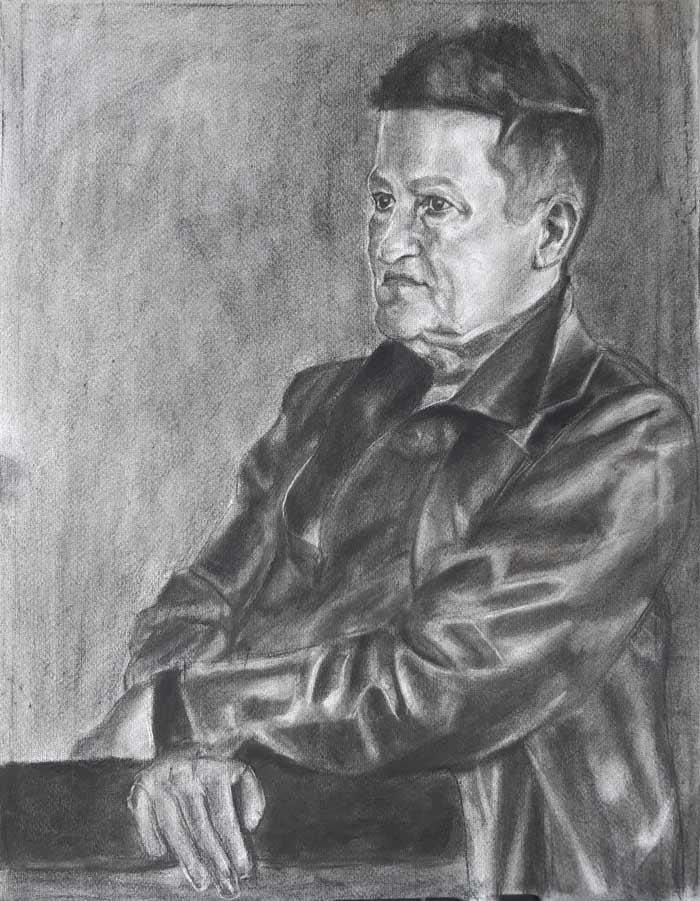Portrait drawings by Emma, Anatomy Master Class student
Hi,
I attended an art school, and would like to improve my portrait and figure drawing skills. Unfortunately, this year due to time restrains, I couldn't draw as much from life as I wanted. However, now I am hoping to catch up and draw more. I am planning on drawing more portraits from life in the next few weeks, so I hope that I can work on my weakest point.


Here is another portrait that I drew six months ago:

Best regards,
Emma
Feedback from Vladimir London, Anatomy Master Class tutor
Thank you for your wonderful portraits. I like your artworks very much; great job!
You have good drawing skills to capture what you see - likeness and anatomy, but you also need to work on something you do not see in life when drawing portraits - the aerial perspective.
Here's one example - both shoulders of a sitter are depicted with the same contrast and attention to detail despite one shoulder is closer to a viewer than another. On such shallow object as a body, you won't see the aerial perspective in life, yet you need to draw what you know.
I will give you here an extract from one Life Drawing Academy lesson:
The aerial perspective, also known as atmospheric perspective, is about how the atmosphere affects objects' appearance. In life, you can only notice this perspective when the distance is great, for example in landscapes.
The aerial perspective rules are very simple. Objects that are closer to a viewer have to be depicted with:
- Greater contrast between light and dark tonal values
- More defined details
- Bolder and stronger lines
- More saturated and warmer colors than those objects that are further away
In a still-life or a portrait, you will not see the aerial perspective because the depth is very shallow. Nevertheless, an artist has to draw what one knows, not what one sees to make artworks more realistic and believable. This helps a viewer to differentiate between grounds.
Check these two drawings by Russian art students:

The part of the rosette that is closer to a viewer is depicted with stronger lines and has a greater contrast than another half.
In the drawing of a classical bust, the hairstyle of the left, which is closer to a viewer, has more details, greater contrast between light and dark tones and stronger lines than the part of the hairstyle on the right.
Both these objects are too shallow in depth for the aerial perspective to be noticeable. Nevertheless, students did these drawings according to the aerial perspective rules.
This is just a part of one task instructions that our students receive in the Life Drawing Academy Correspondence Course, which comes with 100 drawing tasks.
I hope this helps.
To your creative success,
Vladimir London
Anatomy Master Class tutor
Thank you for the kind words and your help! Although I started these portraits from life I had to finish them from photos later. I guess I was bothered by the fact that the whole process was four days which I consider slow.
Emma
If you consider four days being "slow", how about academic drawing studies that students at Russian art academies do for 40, and sometimes 60 hours? As the saying goes: "Art is not an Olympics; they don't give medals for speed."
Vladimir
Learn human body anatomy and proportions quickly and easily
One-time payment - Lifetime Membership
$97 USD




